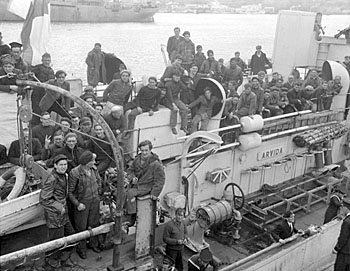Article
Fenian Raids
The Fenians were a secret society of Irish patriots who had emigrated from Ireland to the United States. Some members of this movement tried to take Canadian territory by force, so they could exchange it with Britain for Irish independence. From 1866 to 1871, the Fenians launched several small, armed attacks. Each raid was put down by government forces. Dozens were killed and wounded on both sides. The raids revealed shortfalls in the leadership, structure and training of the Canadian militia, and led to improvements in these areas. The raids also took place at a time of growing concern over the threat posed by American military and economic might. This led to increased support for Confederation.







R Badge.jpg)



